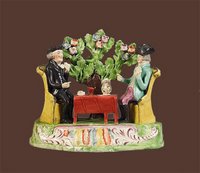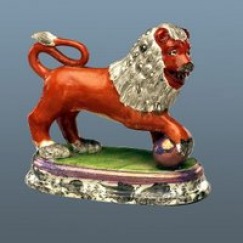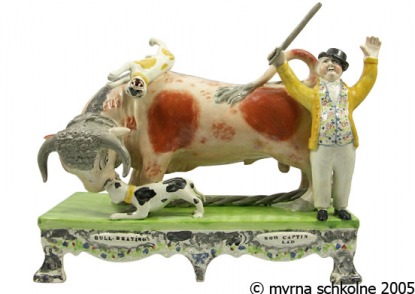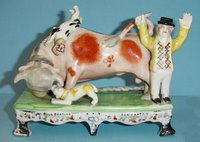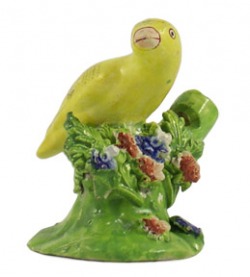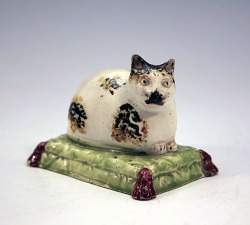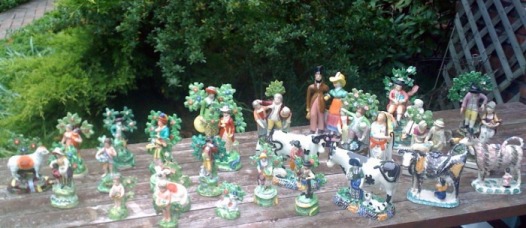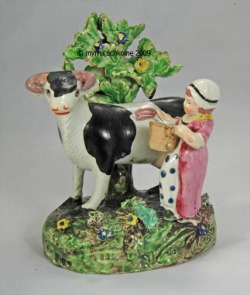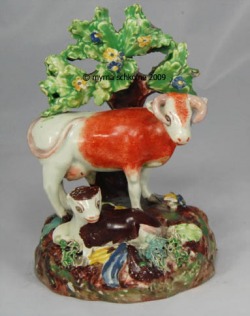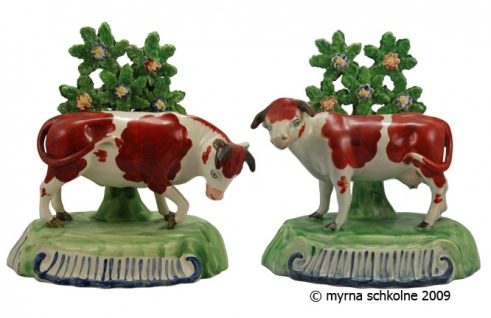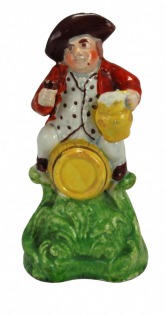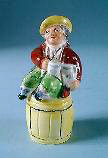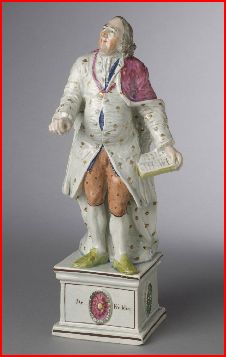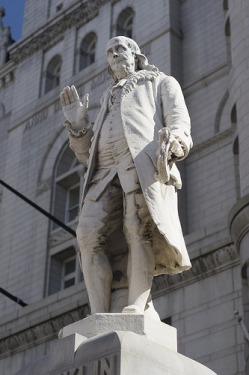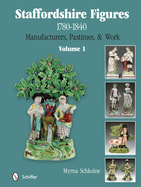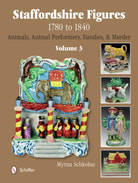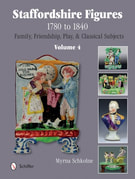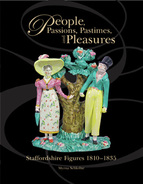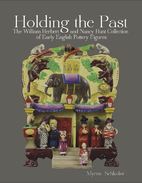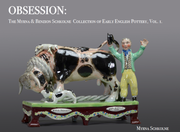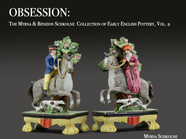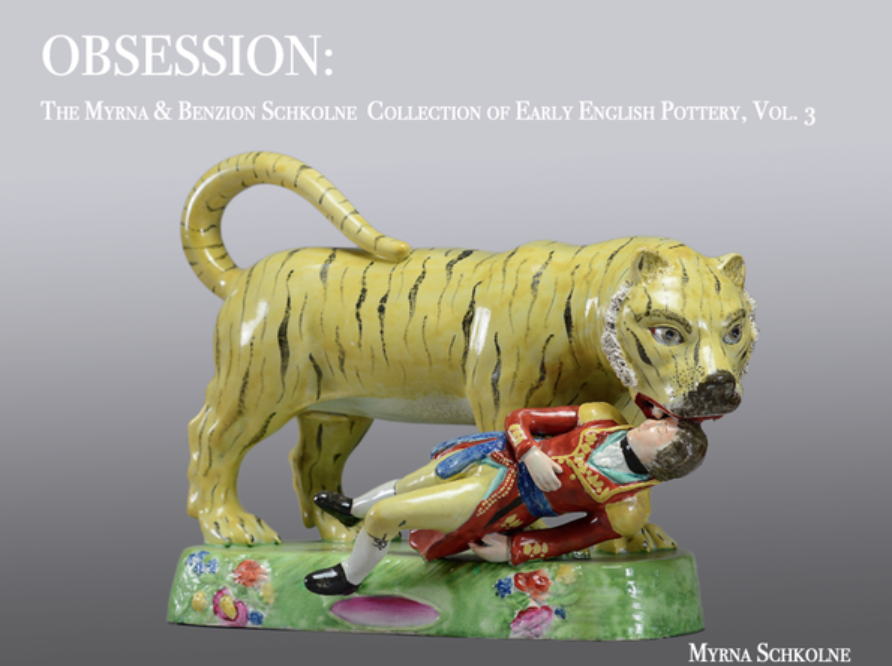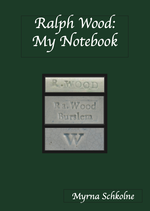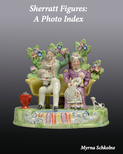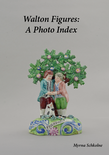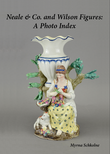Is this Staffordshire figure in the 'Sherratt' style? This time the question is an easy one. The distinctive feather base supporting this striking lion is a dead give-away. It is a definite 'Sherratt' pointer. The same base is found on other 'Sherratt' figures, including courtship and christening groups, and Doctor Syntax, shown here--note the lustre used to decorate the feathering in this case.
BTW, the gorgeous lion is 7 inches high and was once in the Woodstock, UK, showroom of John Howard. It quickly found a new home. The enamels on this particular pearlware figure appear to be particularly spiffy, as befits the King of the Beasts.
What of 'Sherratt' lions generally? They come in several shapes and sizes, but the favored pose is that used for many ceramic lions of this period: paw resting atop a ball, mimicking the pose of Florence's famous lions. John Howard's lion can be found astride other 'Sherratt'-style bases. Sometimes he is paired with another lion--but never a lioness. A similar 'Sherratt' royal beast, with more liberal use of lustre, is illustrated below.
I don't know of any outright reproductions of this 'Sherratt' lion...yet. The most likely damage is to the tail, so expect some restoration there. Above all, buy a lion with an engaging expression. Your relationship will last a lifetime!

